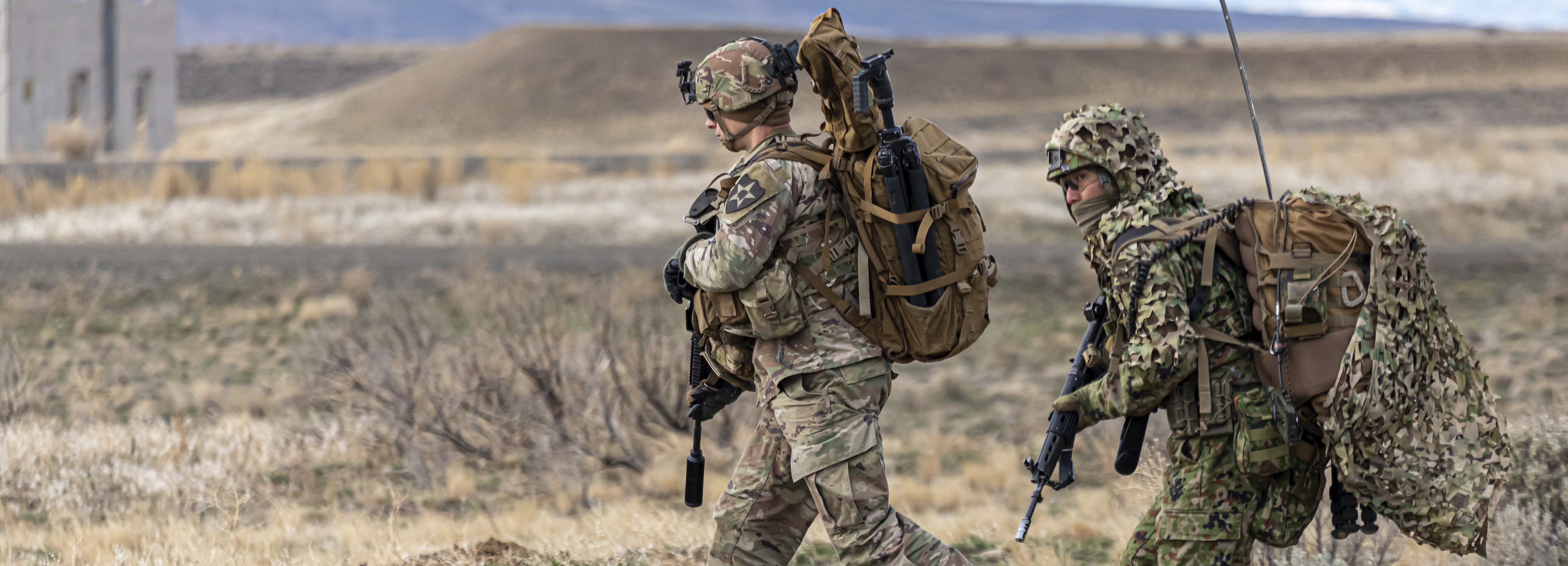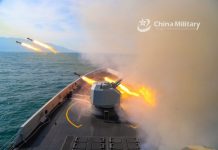As the security threat from regional foes continues to rise, the United States is reportedly looking to reorganize its troops deployed in Japan to achieve better integration among its services and enhanced coordination with the Japanese Self-Defense Forces (JSDF).
Thanks To TikTok, Ukraine Is Raining Missile On Russian Troops With Pinpoint Accuracy & To A Devastating Effect
According to a report published in Japanese media, Mainichi Shimbun, which cited multiple unnamed sources, the United States is working on a plan to place all of its forces in Japan under a new, unified local headquarters inside the aegis of the US Indo-Pacific Command.
Currently, the functions of US Forces Japan (USFJ) Headquarters based at Yokota Air Base are restricted to administrative roles. The USFJ Headquarters coordinates discussions with the Japanese government and SDF, besides managing the implementation of the Status of Forces Agreement that governs US forces in the nation.
The US Indo-Pacific command based in Hawaii manages the American military operations in this region. Due to the lack of adequate military decision-making in troops here, the military observers have long flagged the lack of required coordination between the US Army, Navy, Air Force, and Marine Corps.
In addition, the Indo-Pacific Command has been reviewing its chain of command in response to China’s years-long military buildup.
Along with fortifying the current headquarters at Yokota Air Base, the Indo-Pacific Command is reportedly considering establishing a new joint headquarters covering all units in Japan. However, EurAsian Times could not independently verify these claims.

The US move to constitute a local headquarters and assimilate its forces based in Japan comes after the Japanese government announced plans to create a unified command of the Self-Defense Forces (SDF) that would merge the operations of all branches. The said command is to come into force by fiscal 2027.
Currently, the Joint Staff Office of the SDF commands all three forces and is overseen by the Chief of staff, who is the only point of communication with the Japanese Prime Minister and the US military. This rejig strives to change this, decentralize responsibilities and create an umbrella structure for better integration and interoperability.
The reorganization will place a new command role under the SDF chief of staff, and this officer will monitor the activities of all three units.
In times of emergency, the officer will coordinate moves between the SDF and US forces. With its overhaul, the US would effectively replicate the SDF model to facilitate cooperation between American and Japanese forces.
Additionally, the strategy will give the Indo-Pacific Command a more focused path as it continues its discussions with Tokyo about Japan’s role in force realignment. The move would be significant as it corresponds with Japan’s military modernization and would serve both militaries a chance to streamline their operations against potential threats.
The US Is Steadily Preparing For Contingency
Some in the US military believe it would be better to preserve command functions in Hawaii in the case of a situation involving China because all of Japan may be threatened by missile assaults and other threats.
However, there is growing consensus that USFJ needs to have a counterpart to the SDF’s envisioned “Joint Command Center” outlined in Japan’s National Defense Strategy.
The Japanese media report highlighted that the pace at which missiles and other weapons can be deployed has increased, and unit operations now call for more prompt decision-making.
This is the driving force behind the US military calling for deeper operational integration between its troops and the SDF, which is also the impetus for efforts to improve interoperability between the two forces.
According to the data published by the US Department of Defense (DoD), the US has over 56,000 active-duty service members in Japan. It is pertinent to note that the USFJ presence is only slated to increase in the island country, given the twin security challenge presented to Tokyo by China and North Korea.
The integration between the SDF and the USFJ will likely run parallel to each other and ensure better coordination and interoperability. As of now, it cannot be ascertained whether there would be some sort of unification between the two forces.

The move suggests that the US is building combat preparedness against its principal enemy in the region – China. Military experts have observed that a Chinese military operation against Taiwan can inevitably draw Japan into the conflict due to its geographical proximity.
China has made no bone of the fact that it is persevering in its quest to invade Taiwan and unite it with the Chinese mainland, while US President Joe Biden, on his part, has stated that his military would intervene to help Taiwan defend its sovereignty.
These developments and reorganization of force will be keenly watched in China that considers these moves aimed at itself.
The US is also assisting Japan in its military modernization. Under its new security and defense plans, Japan is acquiring many long-range cruise missiles, including the Tomahawk, developed by the United States, to defend itself against potential attacks.
It is also bolstering its defenses in the country’s southwest amid growing concerns about a Taiwan emergency.
The two sides are due to meet for a 2+2 security dialogue later this month, where discussions on joint security cooperation are expected to come up.
- Contact the author at sakshi.tiwari9555 (at) gmail.com
- Follow EurAsian Times on Google News




